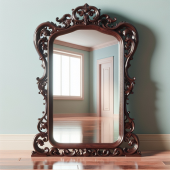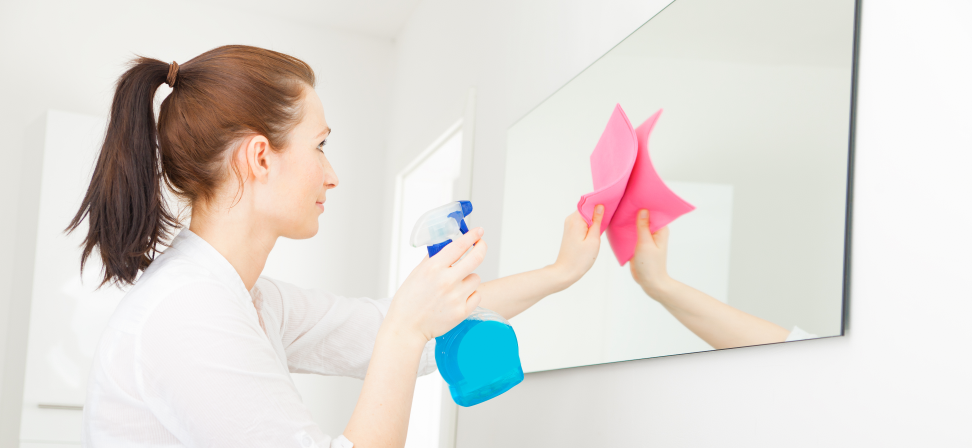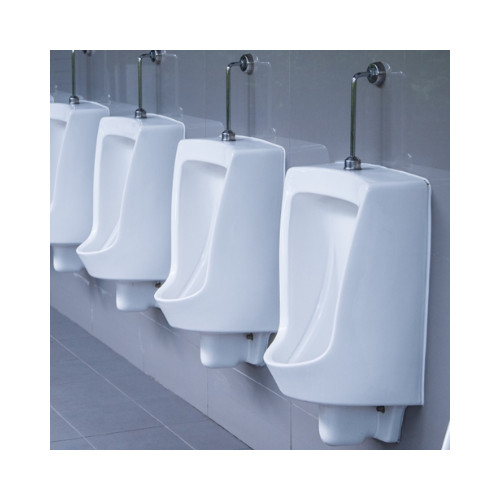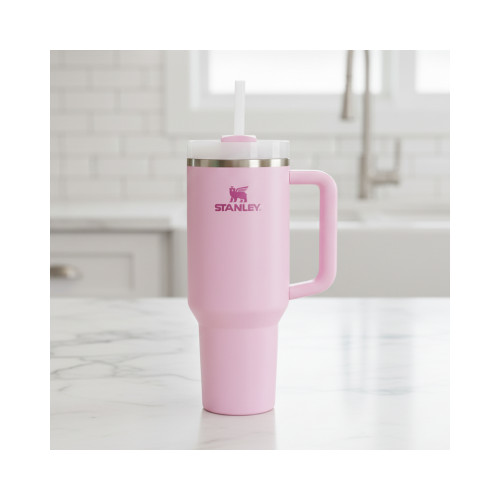
How to Clean a Mirror
Cleaning a mirror is essential not only for aesthetic reasons but also for practical purposes. A clean mirror not only enhances the overall appearance of a space by providing a clear reflection but also contributes to maintaining hygiene and cleanliness. Over time, mirrors accumulate dust, smudges, and other particles that can obscure their reflective surface and diminish their effectiveness, so knowing how to clean a mirror is of utmost importance. Regular cleaning not only removes these impurities but also prevents the build-up of grime that can be harder to clean later on. Additionally, a clean mirror can brighten up a room by reflecting light more effectively, making the space feel larger and more inviting.
Whether it's in a bathroom, bedroom, or any other area of the home, keeping mirrors clean ensures they serve their intended purpose optimally while adding to the overall cleanliness and ambiance of the space.

Step-By-Step: How to Clean a Mirror
Cleaning a mirror is simple! Start with the frame, followed by cleaning the mirror glass. Here’s a step-by-step guide:
Cleaning the Frame
Just as important, is cleaning the frame of your mirror. If your mirror is ornate, due to the shape of the frame it's likely that there's a high number of crooks and crevice for dust to lurk./p>
- Wipe the frame with a microfibre cloth, ensuring that it's free from dust.
- If your frame is ornate and collects dust in the any crevices, you can use either a soft toothbrush or a cotton bud. Gently brush out dust collected in indents, and give the frame a final wipe-over with a microfibre cloth to remove any residue left over.
- If there are any tarnishes on the frame, lightly dampen the corner of a microfibre cloth apply gentle pressure and wipe. Ensure the frame is completely dry afterwards to prevent water damage.
The specifications of your frame will play a significant role in determining how you should clean it. For instance, if it's crafted from silver, you'll need a cleaner tailored specifically for silver surfaces.
If this is the case, please follow the manufacturers instructions. Products that may be suitable for frame specific materials include Brasso (metal polish suitable for brass, copper, stainless steel and chrome) and Peek Polish (metal polish suitable for silver, stainless steel, tin and aluminium).
Cleaning the Mirror Glass
- Remove any dust or loose particles from the mirror’s surface. You can use a dry cloth or a duster for this.
- Spray your chosen glass cleaner directly onto the mirror’s surface. Alternatively, you can spray it onto your cleaning cloth if you prefer.
- Use your microfiber cloth or paper towels to wipe the mirror from top to bottom in a zigzag motion. This ensures you cover the entire surface without missing spots.
- After the initial wipe, inspect the mirror for streaks or spots. If you see any, give those areas a quick once-over with your cloth or paper towel.
- If you want an extra shine, use a dry cloth to buff the mirror gently. This can help remove any remaining streaks and leave the surface sparkling.
- Step back and take a look at your handiwork. Make sure the mirror is clean and streak-free. If you spot any missed spots or streaks, go back and touch them up.
Conclusion
Remember, it’s best to clean mirrors when they’re cool and out of direct sunlight to prevent streaking. Cleaning mirrors in direct sunlight can cause the cleaning solution to dry too quickly, leaving streaks or residue on the surface.
Furthermore, always use gentle, lint-free materials when cleaning mirrors to avoid scratching the surface. Abrasive materials like rough towels or harsh cleaning pads can damage the mirror's delicate coating or leave visible scratches. Microfiber cloths are ideal for cleaning mirrors because they are soft, non-abrasive, and trap dust and debris effectively without leaving behind lint. When selecting a cleaning solution, opt for a gentle glass cleaner specifically formulated for mirrors to ensure it won't harm the reflective surface. By using the right tools and techniques, you can keep your mirrors looking pristine without risking damage to their finish.
An Alternative Method: Microglass Cloths
If you'd rather use a chemical-free method to clean your windows, substitute the glass cleaner for a bottle of water, and use a microglass cloth. The microglass cloth is highly absorbent and, when used solely with water, produces a streak-free finish on mirrors and glass. It's even made from 82% recycled material!
Stay Connected
Stay connected and be the first to know about our latest products, special offers, and exciting news:The Cleaning Blog
Want to learn more about cleaning? From the latest cleaning and hygiene news to handy how-to guides, why not check out our most popular blog categories.Stay Connected
Stay connected and be the first to know about our latest products, special offers, and exciting news:












